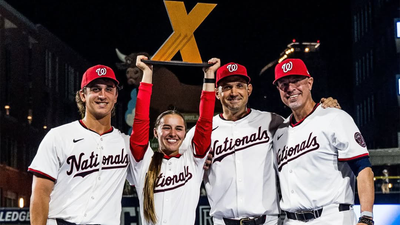
Is College Baseball MLB’s Fastest Path to the Show?

The other night I sat back and watched Trey Yesavage, the 2024 first-round pick from East Carolina University, ascend from college ace to major-league starter in a matter of months and dominate the Los Angeles Dodgers in the World Series. He was touching 97 mph, carved up Hall of Fame hitters and punching guys out like he had been doing it for years.
Meanwhile, a tweet popped up that stuck with me:
What Yesavage has done should completely change the way teams think about pitching prospects and pitching development
— James Schiano (@James_Schiano) October 30, 2025
We know exactly what MLB caliber stuff looks like and if you have you have it
There’s no point in wasting bullets in the minors when you can get MLB hitters out https://t.co/AD1TXRKb6B
That line captured more than a moment. It highlighted a crazy shift in how front offices are viewing development, and it exposed a broader question: what role does traditional prep and college baseball play in the modern path to the majors? With Yesavage’s lightning rise, it’s clear the answer is changing.
In the next few minutes I want to explore how college baseball is no longer just a stepping-stone — it’s fast becoming a primary launch pad for MLB. I’ll pull in the economics, the training shifts, the analytics infrastructure, and the coaching models (including the case of Tony Vitello at Tennessee) that show how the game is rewiring itself. Because for players, coaches and front offices alike, the old timeline is broken and there’s a new one: grab an MLB-ready player early, shorten the development curve, and get value quicker.
That’s modern baseball.

The Moment That Sparked It
When Yesavage came out of East Carolina in the 2024 draft — selected 20th overall by the Toronto Blue Jays — he obviously wasn’t viewed as a multi-year minor league project. I actually remember on draft day hearing an analyst on MLB network mention he was the most MLB ready arm.
He opened the 2025 season at Low-A, worked through High-A, Double-A, Triple-A and by September made his MLB debut on 9/15/2025.
In his minor league run he logged 98.0 innings with a 3.12 ERA and a 0.97 WHIP. By season’s end his MLB line stood at 14.0 innings, 16 Ks, 3.21 ERA.
The leap wasn’t just fast — it was a reminder. If a club identifies a college arm with “MLB stuff,” the calculus says: why wait? The tweet by Schiano echoed that sentiment. The development timeline in baseball — once measured in years, innings and plate appearances — is shrinking. College arms are arriving earlier, contributing sooner, and altering how teams evaluate hitters and pitchers alike.
Case Study — Trey Yesavage: From ECU to the World Series (2024–2025)
|
Category |
Stat / Info |
Source |
|
College Program |
East Carolina University (AAC) |
ECU Athletics |
|
Drafted |
2024 MLB Draft – 1st Rd (20th overall), Toronto Blue Jays |
MLB.com |
|
MiLB 2025 |
98.0 IP • 3.12 ERA • 0.97 WHIP • 116 K • .210 BAA |
MiLB.com |
|
MLB Debut |
Sept 15 2025 vs Tampa Bay |
MLB.com |
|
MLB 2025 |
14.0 IP • 3.21 ERA • 16 K • 0 HR |
MLB.com |
|
World Series Game 5 |
7.0 IP • 1 ER • 10 K vs LAD (Win) – Postseason Rookie K Record (total) |
Blue Jays / MLB.com |
The College Baseball Revolution
Why do college pitchers like Yesavage now ascend so fast?
Because college baseball has transformed. It’s no longer just amateur baseball at the college level; it’s a professional-adjacent ecosystem.
- Technology parity. Many college programs now deploy TrackMan, Rapsodo, Driveline-style training — platforms once exclusive to pro systems. Elite arms arrive with refined spin-rates, release extensions and analytics knowledge already baked in.
- Coaching sophistication. At Tennessee, under Tony Vitello, the program has become a full-tilt development engine. Since his 2018 arrival the Vols have had 52 players drafted and produced 10 first-round picks. Their culture mirrors pro development.
- Competition level. Weekend rotations in the SEC/ACC approximate pro workloads; hitters and pitchers face high-caliber opposition on a weekly basis.
- Visibility and branding. With social media, NIL income and streaming, elite college players build brands early. That means when they hit MLB the engagement value is already built.
The result? College has gone from “detour” to “fast lane.” Schools like Tennessee and LSU become not only a talent factory but almost a strategic partner in a club’s pipeline.
Tony Vitello: A Case Study in Development
Don’t glance over this hire.
Just last week, the San Francisco Giants hired Tony Vitello as manager, marking the first time an MLB club jumped straight to college coaching without professional coaching experience.
Vitello’s résumé is sharp:
- Since his arrival at Tennessee in 2018 the program posted a 341-131 record and won the 2024 national championship.
- His recruiting and development produced 52 draftees (2018–25), including multiple first-rounders.
- He built a pipeline where players were ready for pro ball, and pro clubs were actively scouting his program.
What this signals is blunt: the formula is recognize, recruit (more on the college level), develop, and win. The Giants are betting that as the game changes and college players are more important, they might as well get the guy who is doing it the best.
When clubs draft a college arm now, they’re evaluating not only raw stuff but readiness — mental, physical, developmental. That readiness helps compress risk and time.

Economics and Shelf Life: Why the Timeline is Shrinking
Baseball isn’t immune to business pressures. The shift toward quicker college-to-MLB paths makes economic sense.
- Finite bullets. Every pitch has value. With rising injury risk (Tommy John, TOS/shoulder injuries), organizations prefer to accelerate usage from safe college mileage rather than over-indulge in minor innings.
- Cost control. A college arm whose rookie year comes at 22 instead of 25 enters arbitration earlier and offers more pre-free agency surplus value.
- Marketing upside. Players who arrive early and perform on big stages boost engagement and brand equity. Yesavage’s World Series outing, and guys like Paul Skenes and Dylan Crews are prime examples.
- Investment in tech at lower cost. NCAA programs often have budgets larger than minor league affiliates, meaning arm development occurs earlier and at scale.
In short: the faster you can identify, develop and deploy, the higher the return. College programs now function like low-cost development hubs that plug directly into MLB pipelines.
Prep vs College: A Shifting Equation
For years the debate was: high-school versus college versus JUCO.
Now things are really evolving.
High-school arms still get drafted, but the timeline is risky — four to five years in the minors, more innings, more uncertainty. College arms offer a more polished, lower-risk alternative:
- They’ve faced high-level competition, thrown in important games, built track records.
- They’ve been part of development systems that mimic pro labs.
- They have brand value, social traction, and often NIL opportunities that make college financially viable.
With college programs investing heavily and producing MLB-ready arms faster, the value proposition of going to school has never been higher. The path: high school → college (2-3 years) → majors in 1–2 years is increasingly viable. That’s a dramatic change from the old model (draft out of high school or junior college, five years in the minors).

Pipeline Snapshot — LSU → Pro (2023–2025)
|
Player |
Path & Milestones |
2025 Performance |
Notes |
|
Paul Skenes (RHP) |
Air Force → LSU → #1 Pick (2023) → Pirates Debut 2024 |
17 – 5 • 2.51 ERA • 242 K in 188 IP |
2025 NL Cy Young Front-Runner |
|
Dylan Crews (OF) |
LSU → #2 Pick (2023) → Nationals Debut 2025 |
.261 AVG • 14 HR • 54 RBI • 3.2 WAR (IL Stint July) |
Cornerstone of Nationals Rebuild |
|
Coach Connection |
Developed under Head Coach Jay Johnson (LSU 2023 & 2025 National Champions) |
LSU National Champs |
Shows ROI of College Development |
Implications for Players, Coaches & Fans
For players:
College matters. Go to school, don’t worry about NIL money, develop and work your ass off. You’re closer than ever to the big leagues.
For coaches and development systems:
The hybrid coach now matters: one who understands biomechanics, analytics and technology and who retains the ability to coach feel, pitch sequencing and game-management. Mix up the model: blend movement philosophy, data, arm health metrics — but still teach hitters and pitchers how to think, not just how to spin it or throw the shit out of it.
For fans:
This shift is a golden opportunity. Start paying attention to the players names more— they’re going to be on your TVs, pitching in the playoffs, and winning MVPs sooner than later in the show
For the game:
If college becomes a real, viable alternative to four years in the minors, then the entire ecosystem shifts: roster construction, draft strategy, minor-league investment. Minor leagues might morph. They already are. College programs may invest even more in analytics labs. The value chain of baseball is rewiring. Buckle up.
Closing Thought
For years the script was: draft out of college or high school, watch the player toil for 3–5 years in the minors, hope he reaches the show before 25/26. Now the script is different. College has become runway, not just waiting room.
Trey Yesavage didn’t merely throw a gem the other night — he condensed what had been five years of development into a few months. Tony Vitello’s leap to MLB proves that clubs recognize this new reality.
So if the question is: Does college baseball matter more than ever?
The answer is emphatic: yes. It matters not only for development, but for the business of baseball, for the marketing of players, for the accelerating of timelines, for the preserving of talent. And records will be broken since players will have longer careers.
If you’ve got “MLB stuff,” waiting becomes a cost.
And baseball is finally paying attention.
Sources
- ECU Athletics — East Carolina University Baseball Statistics & Player Profiles
- MLB.com — 2024 MLB Draft Tracker, Player Pages, Game Logs, and Postseason Data
- MiLB.com — Minor League Player Statistics and Performance Reports (2025 Season)
- Blue Jays Communications — Postseason Media Notes and Game 5 Box Score (2025 World Series)
- Pitcher List — Scouting Analysis: Trey Yesavage Developmental Profile
- University of Tennessee Athletics — Tennessee Baseball Draft History and Program Records (2018–2025)
- Knox News — Coverage of Tennessee Baseball’s 2024 National Championship Season
- Sports Illustrated — Feature: Tony Vitello Hired as San Francisco Giants Manager (Oct 2025)
- MLB Network — Draft Coverage and Analyst Commentary, July 2024 Broadcast
- NCAA — College World Series Records and Statistical Summaries (2021–2025)
- Baseball Reference — Active MLB Rosters Featuring Tennessee Alumni (2025)
- James Schiano (@James_Schiano on X) — Tweet on MLB Development Timelines, Oct 2025
- Business of Ball — Original Data Modules & Performance Datasets (College-to-MLB Pipeline, 2023–2025)




